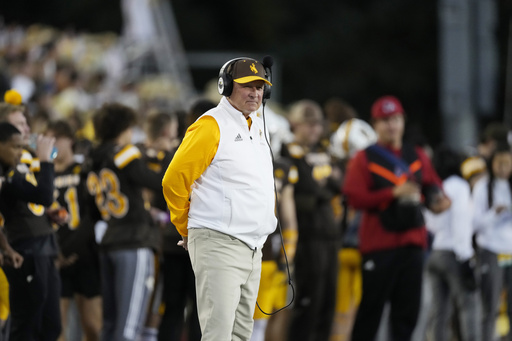
A rule change proposal aimed at addressing the issue of players feigning injuries for unnecessary timeouts will be reviewed by the NCAA Football Rules Committee during its upcoming meeting.
This practice, often encouraged by coaches, has become a strategy used by defenses to disrupt fast-paced offenses or allows offenses to delay plays or secure additional timeouts.
The American Football Coaches Association (AFCA) has introduced a proposal that mandates any player who receives medical attention for an injury on the field to remain sidelined for the entire possession.
Currently, such players only sit out for one play before being allowed back into the game.
AFCA executive director Craig Bohl expressed concerns regarding the ethical implications of this issue, stating that it undermines the integrity of the game.
“We’ve drafted this proposal to address the concern, and initial feedback has been positive. There may be opponents, but we invite constructive alternatives from those critical of our approach,” Bohl remarked.
Specific exceptions to the proposal are included; coaches can utilize a charged timeout to have the injured player return within the same possession.
Players who incur injuries from penalties are exempt, along with designated players on both offense and defense indicated by a green dot on their helmets, who can return after missing just one play.
The problem of perceived feigned injuries gained extensive attention last season, particularly in the Southeastern Conference, prompting commissioner Greg Sankey to issue a memo urging teams to cease all practices related to faking injuries for timeout advantages.
The NCAA Football Rules Committee is set to convene in Indianapolis at the end of February, where this topic will be a primary focus.
If the AFCA’s recommendation is accepted and subsequently endorsed in the spring by the Playing Rules Oversight Panel, the new rule would take effect in the following season.
Steve Shaw, the NCAA supervisor of officials, noted that officiating coordinators from Division I conferences expressed their endorsement during a recent annual meeting in Texas.
To illustrate the issue, Shaw presented a video montage highlighting instances of players faking injuries, some of which were particularly ridiculous.
Shaw suggested that anyone doubting the seriousness of fake injuries would likely reconsider after viewing the footage.
“Once you see those clips, it’s hard not to think, ‘This is just unacceptable,’” Shaw commented, indicating that he does not intend to release the video publicly.
In one instance showcased, a player appeared to struggle with a cramp, yet behaved with little concern, displaying a cheerful demeanor as the trainer attended to him.
“The trainer leads him off, and the player is grinning. When the trainer assists him with stretching, the player straightens up and returns to the sidelines ready to re-enter,” Shaw explained.
Bohl noted that the most frequent offenders of this practice are rotational players like defensive linemen and running backs.
He illustrated how such players observe their coaches gesturing to signal them to fall down for a temporary substitution, which leads to the current strategy of using faked injuries to buy time.
“The requirement for a player to sit out a full possession may discourage coaches from taking advantage of the situation, therefore keeping their players more ethical,” Bohl remarked.
He also warned that, without intervention to curb fake injuries, the practice may escalate, leading to a culture where coaches feel compelled to embrace this unethical behavior just to remain competitive.
Bohl concluded that while the AFCA proposal may not be the ultimate solution, it is expected to reduce the frequency of blatant acts of players simulating injuries.
“The AFCA must take a stand against the unethical tactics that have emerged surrounding this issue in our sport,” he added.

